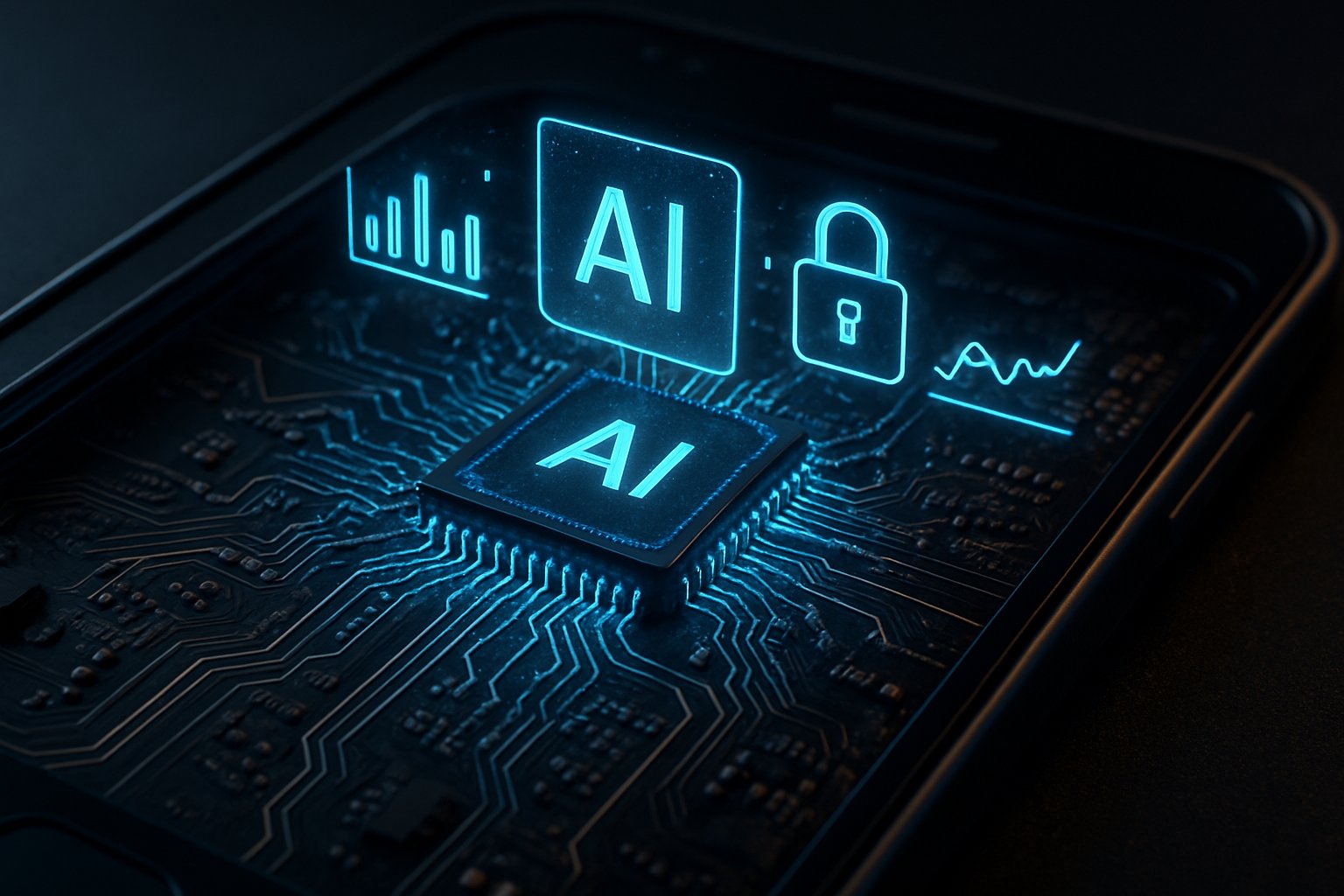
AI CERTS
2 days ago
Why on-device AI generation is redefining real-time workflows
However, technical compromises remain. Memory ceilings, thermal limits, and battery drain still challenge engineers. Nevertheless, recent advances demonstrate viable solutions. This news report unpacks market momentum, hardware progress, compression tricks, hybrid patterns, and outstanding risks. Along the way, it shows why on-device AI generation now heads many roadmaps.

Market Momentum Accelerates Rapidly
Demand for edge intelligence has surged. Grand View Research valued the global on-device market at USD 8.6 billion in 2024. Furthermore, projections suggest nearly USD 37 billion by 2030, reflecting a 27.8 percent CAGR. Similar reports from MarketsandMarkets highlight rising device compute orders across phones, PCs, and XR headsets.
Several forces drive the climb. Firstly, privacy regulations push data locality. Secondly, creative professionals crave offline resilience. Thirdly, cloud GPU costs keep ballooning. Meanwhile, flashy demos from Google and Apple showcase real benefits in “live” features.
- Pixel phones summarizing calls locally
- Apple Intelligence rewriting emails offline
- Qualcomm PCs drafting code while disconnected
- Academic projects streaming text-to-video on handsets
These milestones prove on-device AI generation works beyond labs. In contrast, traditional cloud workflows cannot always match the immediacy. Market velocity therefore remains high. These indicators set the stage for deeper technical examination.
Hardware Powers Local Models
Modern silicon finally unlocks practical latency reduction. Snapdragon 8 Elite Gen 5 advertises 60 TOPS from its Hexagon NPU. Additionally, Apple’s Neural Engine reaches similar throughput on recent A-series chips. Meanwhile, Arm’s client cores add FP16 extensions that assist quantized inferencing.
NPU performance metrics rise yearly. Consequently, vendors now claim sub-second generation for compact language models around three billion parameters. Google’s Gemini Nano and Apple’s foundation model confirm the benchmark. Furthermore, generative mobile scenarios like live translation appear smoother, thanks to diminished thermal throttling.
Nevertheless, power draw still matters. Engineers balance frame rates, precision, and battery life. Therefore, silicon roadmaps emphasize efficiency gains per watt. One Qualcomm executive recently called this phase “the turning point for personalized, sustainable on-device AI generation.” That optimism links directly to the next topic—shrinking models even further.
Techniques Cut Model Size
Researchers have unleashed a toolbox for compression. Quantization drops weights to INT4 or even binary formats. Moreover, pruning and weight clustering slice redundant parameters. Additionally, token merging and speculative decoding shorten inference paths, yielding extra latency reduction.
Adapter methods such as LoRA allow user fine-tuning through tiny matrices. Consequently, device compute requirements fall while personalization quality rises. Apple, Google, and Meta each cite these approaches in technical postings.
- INT4 quantization: 4-6× memory savings
- Pruning: 20-40 percent weight removal
- Speculative decoding: faster first-token time
- LoRA adapters: kilobyte-scale personalization
These tricks enable on-device AI generation even on mid-tier smartphones. Yet compression alone cannot handle every workload. Thus, architects embrace blended deployment patterns.
Hybrid Designs Balance Load
Vendors increasingly split tasks between pocket and cloud. A lightweight model provides instant output. Meanwhile, heavier prompts route to remote clusters for richer context. Apple brands the approach as Private Cloud Compute, emphasizing encryption. Google offers similar fallback inside Android’s AICore.
This duality extends to safety. Local models run first, but cloud checks may filter or reinforce responses. Consequently, latency reduction coexists with scalable oversight. Moreover, developers preserve generative mobile features when networks falter.
On-device AI generation therefore cohabits with server giants rather than replacing them entirely. These blended pipelines raise new governance questions, however, especially around integrity and content moderation.
Risks Demand New Safeguards
Running models locally complicates updates, IP protection, and misuse prevention. Google already withholds Gemini Nano on bootloader-unlocked Pixels, citing security attestation. Furthermore, fragmented access rules create uneven developer experience across ecosystems.
Battery impact remains a hurdle. Extended video diffusion can drain devices quickly. In contrast, cloud workloads shift power costs outside the handset. Nevertheless, continual NPU gains and smarter schedulers promise relief.
Professionals seeking structured competence can validate skills through the AI Robotics Specialist™ certification. Consequently, teams acquire best practices for secure, efficient device compute pipelines.
The balance of risk and reward still favors expansion. Every challenge described above now sparks dedicated R&D. Therefore, leaders must forecast strategic directions wisely, as outlined in the final section.
Strategic Moves Ahead 2025
Platform control will shape revenue. Moreover, chip roadmaps suggest annual doubling of practical parameter counts. Meanwhile, open-source communities keep releasing lighter Llama variants, accelerating generative mobile adoption.
Enterprise buyers should track three priorities: regulatory shifts, hardware compatibility, and developer tooling. Consequently, roadmap committees must align device fleets, safety policies, and talent upskilling. Notably, Cristiano Amon predicts widespread on-device AI generation across PCs within two years.
These strategies reinforce a simple truth. The edge is no longer an experimental fringe. Instead, it stands central to customer experience and operational economics. Understanding that reality now becomes essential.
The advancements summarised above build a coherent picture. However, day-to-day performance proofs will convince skeptics and unlock budgets for broader rollouts.
Conclusion And Next Steps
Edge hardware, clever compression, and hybrid orchestration now align, making on-device AI generation commercially viable. Moreover, latency reduction, privacy gains, and cloud cost savings drive adoption across generative mobile scenarios. Nevertheless, security, power, and policy challenges persist, requiring vigilant engineering and governance.
Forward-thinking teams should benchmark device compute capabilities, monitor silicon roadmaps, and train staff rigorously. Additionally, pursuing credentials like the linked AI Robotics Specialist™ expands organizational readiness.
Act now to experiment, measure, and refine. Consequently, your products will meet user demands for instant, private intelligence—right in their hands.



